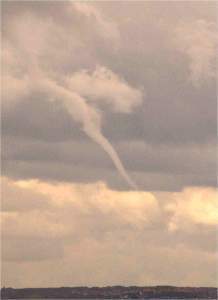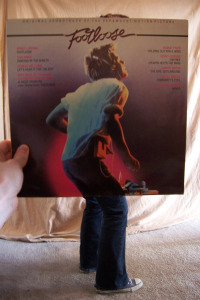Colin M. Drysdale's Blog, page 19
August 12, 2013
Of Lighthouses And Zombies …
In the last couple of weeks, I’ve been copy-editing the anthology of short zombie stories which I’m aimig to have on sale before the end of this year, and it occurs to me that I have a slight obsession with lighthouses. They feature as the backdrop for three of stories which will go into this anthology, and lighthouses also play a key role within my novel, For Those In Peril On The Sea. Where this mild obsession with lighthouses came from, I’m not too sure but I think it in part comes for growing up in Scotland. Modern lighthouses as we currently know them originated in Scotland at the start of the nineteenth century and in particular are associated with one family: The Stevensons. Across three generations including the then fledgling writer Robert Louis Stevenson, the Stevensons were responsible for building many of the lighthouses which still dot the Scottish coastline. Some of these are on headlands or larger islands, but others stand on what are little more than rocky reefs which are only visible above the surface when the tides are low.
When you consider that these lighthouses are designed to withstand winds which can blow at over 100 miles an hour for weeks at a time and waves reaching over 50 feet in height, it’s probably not surprising that they are incredibly robust buildings. To me, this means that lighthouses have a lot of potential as safe houses in the event of a zombie apocalypse. Add to this their remote locations in areas with few people and the become even more appealing because when the dead start to rise, fewer people will mean fewer zombies. While they would be difficult to get to, the ones which stand on uninhabited rocks far out to sea would be almost impregnable both to zombies and to any marauding bandits looking to steal your supplies after the world falls apart. Of course, you’d probably get cabin fever pretty quickly as there’d be little to do but to alternate between staring at the walls and the sea.
For similar reasons, lighthouses also form the perfect background for zombie stories which are a little different from your traditional ‘escape-from-the-city’ type of tale. The rugged landscape in which they tend to be set combined with the towering structures themselves open up the possibility of all sorts of interesting set pieces between zombies and survivors. Then there’s the history of the lighthouses. There are stories of lighthouse keepers going mad and attacking their colleagues, or just disappearing all together which form a rich seam for story ideas. The most famous of these is probably the mystery of Flannan Isle, where three keepers vanished into thin air in December 1900 never to be seen again. I couldn’t help using this as the basis for a short zombie story called When Death Came To Flannan Isle.
While working on the sequel to For Those In Peril On The Sea, I need to be constantly on guard not to drift too much towards using lighthouses in any of the zombie set pieces. This is because they formed such a key role within the first book, it would be very difficult to include them in the second without it coming across as a bit samey. I’m sure one or two will sneak their way in in the background, but for the time-being they are off limits. This is a shame as there are some truly spectacular lighthouses on the west coast of Scotland which would make stunning backdrops for battles with zombies.
I’m not the first writer to be inspired by lighthouses (Robert Louis Stevenson used the places the visited while working in his family’s lighthouse building business as inspiration for several of the novels he wrote later in life) and I’m sure I’ll not be the last. I do, however, need to make sure that this slight obsession with them doesn’t sneakily grow to the point where it hijacks my writing. The occasional lighthouse-based zombie story is one thing, but too many of them and I know it will become repetitive.
Yet, if a zombie apocalypse were ever to happen and I made it out of the city in one piece, there’s a good chance you’d find me holed up in one. I haven’t quite decided which one yet, but there’s a few I’ve definitely got my eye on!
*****************************************************************************
From the author of For Those In Peril On The Sea, a tale of post-apocalyptic survival in a world where zombie-like infected rule the land and all the last few human survivors can do is stay on their boats and try to survive. Now available in print and as a Kindle ebook. Click here or visit www.forthoseinperil.net to find out more. To download a preview of the first three chapters, click here.
To read the Foreword Clarion Review of For Those In Peril On The Sea (where it scored five stars out of five) click here.


August 9, 2013
What Would You Do If … Dilemmas In A Zombie Apocalypse: No. 23 – The Who Goes First Dilemma
There’s three of you trapped eleven floors up in a skyscraper. You know your best chance of survival is to get out as quickly as possible, but there’s also zombies everywhere – including in the building itself. However, before you can leave the room you’ve been holed up in for the last few hours, you get into an argument as what order you should move down the narrow corridors and which position (going first, last or in the middle) is safest and which is most dangerous. You decide the only thing to do to solve the argument is to draw lots to choose who goes where. You get lucky and get first choice. What do you do?
Take Our Poll
As always, this dilemma is just here to make you think, so there’s no right or wrong answer. Vote in the poll to let others know what you do if you were in this situation, and if you want to give a more detailed answer, leave a comment on this posting.
*****************************************************************************
From the author of For Those In Peril On The Sea, a tale of post-apocalyptic survival in a world where zombie-like infected rule the land and all the last few human survivors can do is stay on their boats and try to survive. Now available in print and as a Kindle ebook. Click here or visit www.forthoseinperil.net to find out more. To download a preview of the first three chapters, click here.
To read the Foreword Clarion Review of For Those In Peril On The Sea (where it scored five stars out of five) click here.


August 5, 2013
The Science Behind The Infected From ‘For Those In Peril On The Sea’
A couple of weeks ago, I posted an article outlining the rules of the world where my book For Those In Peril On The Sea is set. In this article, I want to consider the real science behind the violent and cannibalistic humans I refer to as the infected which inhabit this world. You might think that the infected are purely fictional but they aren’t. Instead, their existence is based on three key premises for the virus which creates them, all of which are more or less consistent with modern scientific knowledge.
The first of these is the disease we call rabies or hydrophobia. While rabies is not a common disease in many western countries, in other parts of the world it is still widespread and kills around 50,000 people each year. Until a vaccine was created in 1885, rabies was pretty much one hundred percent fatal. While a small number of people were reported to have survived before the introduction of the vaccine, these remain unsubstantiated. Since the invention of a vaccine, if someone thinks they have been bitten by a rabid animal and receives it before they start to show any symptoms it is usually sufficient to ward it off. However, if the first symptoms have started to appear (meaning the virus has reached the brain), then the disease remains fatal in almost all cases. Most of those who have survived have been given an intensive treatment known as the Milwaukee Protocol. This protocol requires a dedicated medical team, and involves putting the person into a chemically-induced coma while they are given anti-viral drugs. This treatment is still experimental, and only six people have been cured with it.
Rabies itself is a pretty terrible and terrifying disease, especially in the final stages. People with it thrash around in anger and rage, trying to attack anyone who comes near them. Such patients have to be restrained to prevent them injuring themselves or those around them. The virus that causes it spreads almost exclusively through bites. This is because it can be found in large amounts in saliva, which is produced in vast quantities, causing those infected to froth at the mouth. When a rabid animal bites someone and breaks the skin, saliva gets into the wound and takes the infection with it, so passing it on. Unlike most infections, rabies does not travel through the blood-stream. Instead, it slowly and inexorable makes its way along the peripheral nerves towards the brain. Once there, it gradually spreads until it has taken over. The rate of spread along the nerves is very measured and time between being bitten and the infection reaching the brain is dictated by the distance between wound and the head, meaning the further the original bite is from the head, the longer it will take to develop symptoms. As yet there have been no confirmed cases of human-to-human transmission, but it is theoretically possible. The most likely reason that such transmissions do not occur more frequently may be due to the fact that human teeth are poorly adapted for biting through the skin of others.
The second premise behind the Haitian Rabies Virus (as the disease is called in For Those In Peril On The Sea) is a technology known as small interfering RNA, or siRNA. Since it was only invented in the late 1990s, this is a relatively new technique in the tool kit of molecular biologists. Yet, it is one which holds a lot of potential. The siRNA approach involves creating a short piece of RNA that has been specifically designed to attach itself to a DNA sequence in an organism’s genome. When this happens, that specific stretch of DNA can no longer be read by the body’s own mechanisms and so any genes that it is a part of cannot be expressed. While this is primarily used to work out the function of specific genes, it is also thought to potentially have therapeutic effects. In particular, it is thought that it could be used to create vaccines for viral diseases that are otherwise untreatable. This is because it can be used to ‘knock out’ key genes within the virus. This has been shown to work in a ‘proof of concept’ trial that created a post-exposure vaccine that has been shown to cure 100% of non-human primates infected with the most lethal strain of the Ebola virus. However, possible therapeutic uses of siRNA are hindered by a number of potential problems. In particular, siRNA can sometimes attach itself to the wrong sections of DNA, so silencing non-target genes and this can have unintended consequences.
The final premise is the role of drug trials in the development of new pharmaceuticals. All drugs must be shown to be effective against a specific disease or condition, and also to have sufficiently few, minor, or at least acceptable side effects before they will be granted a licence. While these are meant to be done in carefully-controlled trials, there are regular charges and rumours of drug trials not being conducted properly. Worse, it has been alleged that western pharmaceutical companies have conducted illegal trials in areas such as India or Africa, often using untested drugs on people who have not or cannot provide their full consent.
Even when drug trials are set up and run properly and legally, things can go unexpectedly, and horribly, wrong. In particular, in phase one trials, the first on humans, drugs that worked perfectly well in animal models can be found to have very different, and sometimes potentially fatal, effects. In one well-known case, six people who received a new drug designed to modulate the immune system experienced catastrophic and systematic organ failure caused by an immune response known as a cytokine storm. While the men eventually recovered, it is likely all suffered permanent damage to their bodies.
In For Those In Peril On The Sea, these three premises are combined to create the perfect storm. An siRNA-based vaccine is created against the rabies virus which is meant to weaken it to the point where the normal human immune response can clear it from the body (this is effectively the basis for the Milwaukee Protocol where anti-viral drugs aim to boost the immune system to the point where it can eliminate the virus). This vaccine is found to work well in animal trials, but in the rush to get the drug to market, so that it can be monetised, someone in the company developing it decides to run a phase one trial not in the confines of a western hospital, but in an illegal trial in a developing county (in this case Haiti). This means that when the vaccine starts to show unexpected effects, there’s no way to control it.
The scenario behind these unexpected effects is that the strain of the rabies virus found in Haiti is subtly different from the one the vaccine has been tested on in the lab. The slightly different gene sequence means that the siRNA vaccine latches onto the wrong part of the virus’s genome. When the virus attempts to deal with this attack by re-organising its genome, it results in a series of mutations. This causes the virus to dramatically speed up the time it takes to reach and infect peoples’ brains, taking minutes or hours rather than the days or weeks that would be the case with the real rabies virus. This is achieved by the mutated virus being able to carried in the blood and being able to pass through the blood-brain barrier to take over the brain rather than having to crawl slowly along nerves. The mutations also makes the virus less lethal, so it no longer kills people, but no less ferocious in its effects on their brains. This means people infected with it are left in the crazed and violent pre-terminal phase of rabies for the rest of their lives.
Therefore, while I hoped that this scenario never comes to pass, from a scientific perspective it remains feasible, at least in principle.
***
This article first appeared on http://www.forthoseinperil.net/The_Science_Bit.htm.
*****************************************************************************
From the author of For Those In Peril On The Sea, a tale of post-apocalyptic survival in a world where zombie-like infected rule the land and all the last few human survivors can do is stay on their boats and try to survive. Now available in print and as a Kindle ebook. Click here or visit www.forthoseinperil.net to find out more. To download a preview of the first three chapters, click here.
To read the Foreword Clarion Review of For Those In Peril On The Sea (where it scored five stars out of five) click here.


August 2, 2013
What Would You Do If … Dilemmas In A Zombie Apocalypse: No. 22 – The Dog Owner’s Dilemma
It’s been a long, hard winter. You are holed up in a safe house, but you ran out of food the week before and you are close to starvation. A fierce blizzard has been raging outside for the last seven days and it looks like it will continue for at least another week. You could go outside to look for food, but you’d risk freezing to death in the storm; because of the white-out conditions, you’d also have absolutely no chance of seeing or hearing any zombies before it’s too late. Yet, the zombies seem unaffected by the storm, or the freezing temperatures, and you’re pretty sure that, despite the conditions, they’d have no trouble finding you. Your dog is curled up beside you, helping to keep you warm. He’s been with you since before the zombies came and he has saved your life on many occasions, his superior sense of smell giving advanced warning of approaching zombies. As you stroke him, you can feel that he’s skinny but he still has some meat on his bones. You know people in other cultures eat dogs, and that he would provide enough nourishment to last you until the storm is over and it’s safe to go out and forage again, but he the only companion you have left. What do you do?
Take Our Poll
As always, this dilemma is just here to make you think, so there’s no right or wrong answer. Vote in the poll to let others know what you do if you were in this situation, and if you want to give a more detailed answer, leave a comment on this posting.
If you wish to read a further discussion on how useful dogs might be in a zombie apocalypse, you can find one here.
*****************************************************************************
From the author of For Those In Peril On The Sea, a tale of post-apocalyptic survival in a world where zombie-like infected rule the land and all the last few human survivors can do is stay on their boats and try to survive. Now available in print and as a Kindle ebook. Click here or visit www.forthoseinperil.net to find out more. To download a preview of the first three chapters, click here.
To read the Foreword Clarion Review of For Those In Peril On The Sea (where it scored five stars out of five) click here.


August 1, 2013
How A Zombie Apocalypse Would Change Facebook…
***
I put this together because today’s Maths With Zombies problem on my other blog is based around this theme, and because I found the idea amusing…
*****************************************************************************
From the author of For Those In Peril On The Sea, a tale of post-apocalyptic survival in a world where zombie-like infected rule the land and all the last few human survivors can do is stay on their boats and try to survive. Now available in print and as a Kindle ebook. Click here or visit www.forthoseinperil.net to find out more. To download a preview of the first three chapters, click here.
To read the Foreword Clarion Review of For Those In Peril On The Sea (where it scored five stars out of five) click here.


July 31, 2013
Tiredness Kills – A Flash Fiction Story
As I speed along the highway, weaving through the abandoned and burnt out cars, I spot a rusting sign at the side of the road proclaiming ‘Tiredness Kills – Take a Break’ and I can’t help but laugh. I’d always thought such public safety warnings were pointless but now the world’s changed, I can see it’s prophetically useful advice. After all, the last guy I knew who fell asleep when he should have been doing something else woke up to find a zombie chewing his face off. He was meant to be on watch but just couldn’t keep his eyes open and it crept up on him while he slept; so you see the sign’s right, tiredness can kill you, especially in the world in which we all now live.
*****************************************************************************
From the author of For Those In Peril On The Sea, a tale of post-apocalyptic survival in a world where zombie-like infected rule the land and all the last few human survivors can do is stay on their boats and try to survive. Now available in print and as a Kindle ebook. Click here or visit www.forthoseinperil.net to find out more. To download a preview of the first three chapters, click here.
To read the Foreword Clarion Review of For Those In Peril On The Sea (where it scored five stars out of five) click here.


July 29, 2013
Reading The Skies – An Essential Post-Apocalyptic Survival Skill
How do you find out what the weather’s going to be like later today, or tomorrow, or even the day after that? Most likely you turn your TV over to the Weather Channel, go to your favourite weather site on the web or fire up a weather app on your smart phone. Yet, if (or should that be when?) civilisation collapses and you’re left fighting for you life against the zombies which now rule the land, none of these options will be available to you, and all you’ll have to rely on is your own weather forecasting skills. I know what you’re thinking: ‘If there’s zombies every where, why the hell am I going to need to know what the weather’s doing? I mean, I’m not exactly going to be throwing a barbecue and inviting the neighbours round, am I?’
However, you couldn’t be more wrong. Sudden storms can bring down your defences if you’re not prepared for them, while high winds, heavy rain and unexpected frosts can damaged crops and food supplies. Lightening strikes can start bush fires and tornadoes destroy buildings. Snow storms and flash floods can trap you out in the open if they catch you unawares, while hurricanes can level whole cities (or whatever’s left of them!). All of this is on top of having to face the daily struggles to find enough food and avoid being eaten by the rampaging dead. Yet, the weather needn’t be a problem for you if you know what’s coming and can prepare for it ahead of time. It’s only when it catches you with your guard down that it’s dangerous.
So how can you tell what’s coming your way? The secret here is being able to read the skies and unlock the information they holds. Mostly this is about knowing what different cloud formations (or lack there of) mean.
Lenticular clouds, like these ones, can appear dramatic and can indicate that a weather front is coming. Photo copyright: C.M. Drysdale.
For example, dramatic cloud formations on the horizon can mean bad weather’s coming your way. In particular, keep an eye out for clouds, such as lenticular ones, which can indicate turbulence up in the sky and can indicated a front is coming, bringing with it rain, winds and cooler temperatures.Small fluffy Stratus clouds high in the sky usually mean good settled weather. Photo copyright: C.M. Drysdale.
While lenticular clouds indicate a turbulent atmosphere above your head, the high fluffy Stratus clouds indicate stability, and so mean good weather. When you see these clouds you know there is little you need to worry about, well apart from the fact the world has come to an end … the zombies of course!Cumulus clouds develop as hot air rises and given enough time can develop into cumulonimbus, or thunder, clouds. Photo copyright: C.M. Drysdale.
Then there’s the convection clouds. These are isolated cloud formations created by warm air rising up into the sky. They start out as little puffy balls, but given time, they can build, first into Cumulus and then Cumulonimbus clouds which can bring sudden, torrential rain, strong winds, thunder and lightning.Tendrils of cloud reaching down from the base of thunderclouds towards the ground are the first signs that a tornado is one its way. Photo copyright: C.M. Drysdale.
If you see Cumulonimbus clouds forming in your vicinity, you’ll want to find shelter fast, but you still need to keep an eye on them. Why? Because given the right conditions, thunder clouds can turn into tornadoes, and given the damage tornadoes can do, you need to be able to tell if one is forming in the skies nearby. The key is to keep an eye out for little tendrils of cloud reaching down from the base of the cloud towards the ground. These are the first signs that a twister might be on its way. The next sign is when they start to develop into funnel clouds. If they do, that’s the time to get out of the way, and fast, because you don’t want to be anywhere near it when it touches down.Vultures circling in the sky means death on the ground, and in a post-apocalyptic world, that can mean zombies too! Photo copyright: C.M. Drysdale.
Of course, there can be more information in the skies than just the weather. Vultures or other scavenging birds circling in the sky can indicate something’s wrong up ahead because there must be something dead to draw them together. And where there’s dead things, there’s probably zombies feasting, meaning the area is best avoided. Birds can also tell you other things too. Swallows fly closer to the ground when rain is on its way, while a flock of birds suddenly bursting into the air en masse means something’s startled them, and that may well mean undead are approaching.Contrails streaking across blue cloudless skies can give hope because it means someone somewhere is doing better than you are, and that help might one day be on its way. Photo copyright: C.M. Drysdale.
Then there’s the signs of hope that can be up there in the skies above our heads. Think about one of the key moments in 28 Days Later , where Jim spots a plane leaving its characteristic contrail streaking across the sky above the trees. Whenever I see this now, I always think post-apocalyptic thoughts and wonder how I’d cope if the rage virus really did exist.So hopefully this has shown you that being able to read the skies is an important skill to have in your post-apocalyptic survival tool kit and, with that in mind, here’s a challenge for you. Below is a photo of a real sky where something dramatic has clearly happened. I took in the 1990s on Tilloo Cay in the Bahamas, looking west towards Florida.
I’ll give a free, signed copy of my book For Those In Peril On The Sea and a limited edition For Those In Peril On The Sea promotional coffee mug to one person who correctly identifies what the photo below tells you about what happened here. If I get more than one right answer, I’ll randomly select a winner from all those who get it right. This competition will be open until next Monday (the 5th of August 2013) and I’ll post the winner, and more importantly the answer, as soon as I can after that. To enter, just fill out the form below the picture itself.

What’s going on in the sky here? If you think you know, fill in the form below and you could win a signed copy of ‘For Those In Peril On The Sea’. Photo copyright: C.M. Drysdale.
[contact-form]
All pictures in this post are copyright Colin M. Drysdale. Please do not use them for any purpose without express written permission.
*****************************************************************************
From the author of For Those In Peril On The Sea, a tale of post-apocalyptic survival in a world where zombie-like infected rule the land and all the last few human survivors can do is stay on their boats and try to survive. Now available in print and as a Kindle ebook. Click here or visit www.forthoseinperil.net to find out more. To download a preview of the first three chapters, click here.
To read the Foreword Clarion Review of For Those In Peril On The Sea (where it scored five stars out of five) click here.


July 26, 2013
What Would You Do If … Dilemmas In A Zombie Apocalypse: No. 21 – The Altruist’s Dilemma
The five of you have been working your way through the maze of corridors for the last four hours, killing zombies whenever you ran into them. Ahead you finally see the exit and you breathe a sigh of relief because you’re running low on bullets and once you’re outside you can get into you vehicle and drive back to your safe house. You knew almost from the moment you stepped inside the abandoned stadium looking for supplies that it was a bad idea, but it has taken you this long just to get back out safely again. Suddenly three undead shamble round the corner, blocking your path to the exit. You raise your run and fire; the first goes down, but then the gun just clicks: you’re out of ammo and you’ve got no other weapons to hand. You curse your mis-fortune and try desperately to work out what to do next. Then a thought occurs to you: if you attack the zombies bare-handed, it will give the others enough time to escape. Of course, you’ll also die a horrible death as the zombies feast on your still-living flesh. What do you do?
Take Our Poll
As always, this dilemma is just here to make you think, so there’s no right or wrong answer. Vote in the poll to let others know what you do if you were in this situation, and if you want to give a more detailed answer, leave a comment on this posting.
*****************************************************************************
From the author of For Those In Peril On The Sea, a tale of post-apocalyptic survival in a world where zombie-like infected rule the land and all the last few human survivors can do is stay on their boats and try to survive. Now available in print and as a Kindle ebook. Click here or visit www.forthoseinperil.net to find out more. To download a preview of the first three chapters, click here.
To read the Foreword Clarion Review of For Those In Peril On The Sea (where it scored five stars out of five) click here.


July 25, 2013
The Things You Do When You Really Should Be Writing – Part II
As I wrote in the first part of this post, procrastination can be the writer’s worst enemy. Yet, it’s easy to become side-tracked by the daftest little things. Today, for me, it’s been sleeve-facing. For those of you not familiar with this pastime, it’s when you take the cover of an old vinyl album which has a face (or other body part), and match yourself up with it to make it look like you’re part of the picture. I know it doesn’t sound much, but it’s a great way to waste a day when you just can’t face putting in your 5,000 words (or whatever your limit is).
So how do you do it? Well, either raid your record collection (or your partners, or your parents, or possibly grand-parents depending on how old you are) or head down to the nearest charity shop and pick out some records. You’re not making your selection based on the quality of the music (as will be clear from the examples below), but instead you’re looking for ones with a photo or a picture of a person on the sleeve. Specifically, you want one which only has part of a person on it and not a full length body shot.
Once you’ve made your selection, you need to get someone else involved (in my case my girlfriend, who’s also working from home at the moment, was recruited), and grab a camera, and then the fun begins. One of you takes the camera, while the other holds the album and tries to line themselves up with the person on the cover in such a way that it looks like you are part of them. Sometimes this is easy, others it’s not, but either way the results are usually highly amusing.
So without much ado, here’s the results of yet another fruitful day’s procrastination when I should have been writing (note: all these albums were bought specifically to do this with and do not reflect my taste in music in any way what-so-ever!):
The first one we tried was the sound track to the movie ‘Footloose’ because it seemed relatively simple. The legs belong to my long-suffering girlfriend.

Next came my turn, and an old Jason Donovan album (just remember this was purchased from a charity shop specifically for this and it’s not an album I already had lying around the house – honest!). Jason’s head is a little big for my body, but it’s not too bad.

Then came David Essex. This was probably the best one we did. Again the body is mine, and the album isn’t!

Then things started getting a bit more surreal, but it still works…
Well, that’s supper time here in the UK, and yet another day has passed when I’ve missed my writing target because I got caught up in something else that I really shouldn’t have been doing.
Tomorrow, it’s back to working on the sequel to For Those In Peril On The Sea, I promise … unless I stumble across another pointless, but amusing, distraction!
***
If you want to see more example of sleeve-facing (and ones that are a lot better than ours), visit sleeveface.com. Just flicking through the examples there will easily waste half a day when you should be doing something more important.
*****************************************************************************
From the author of For Those In Peril On The Sea, a tale of post-apocalyptic survival in a world where zombie-like infected rule the land and all the last few human survivors can do is stay on their boats and try to survive. Now available in print and as a Kindle ebook. Click here or visit www.forthoseinperil.net to find out more. To download a preview of the first three chapters, click here.
To read the Foreword Clarion Review of For Those In Peril On The Sea (where it scored five stars out of five) click here.


July 24, 2013
The Rules For The Post-Apocalyptic World Of ‘For Those In Peril On The Sea’
I read a blog post by another author (Kaine Andrews) recently where he specifically posted the rules for the fictional world of his book, and I liked the idea so I thought I’d do the same for the post-apocalyptic world of For Those In Peril On The Sea. So without further ado, these are the basic rules under which it operates:
1. In general, the world of For Those In Peril On The Sea is the real world, only with a mutant virus in it that creates the infected (zombie-like humans infected with the virus). As a result, all usual rule of the real world apply. This means if somethings is physically impossible in the real world, it’s also impossible in the world of For Those In Peril On The Sea, so no leaping tall buildings in a single bound or being able to pop off perfect head shots when you’ve never even held a gun before. Really the main differences are the specific rules for the virus and the infected. These dictate important issues relating to how the virus spreads, the course of the infection, what the infected are and are not capable of, and how they can be killed, and are provided below.
2. The mutated rabies virus which creates the infected is passed from person to person through bodily fluids. This includes things like blood and saliva. It can only be passed if the skin is broken and some bodily fluid from an infected get onto it. It cannot be passed on by swallowing bodily fluids (it would be destroyed by stomach acid – unless a person had something like an ulcer which could let it into the bloodstream before this happened), nor can be passed on through contact with mucosal linings of the body (this means things like breathing it in, or it getting in your eyes), unless this is already damaged (such as might be the case for the nasal passages of regular users of drugs such as cocaine). While the most usual route of infection is from a bite, there are other possibilities. If the infected have bodily fluids on their hands or under their nails, something as simple as a scratch which breaks the skin would be enough. Similarly, if a person has an existing open wound and bodily fluids from an infected get into it, this would be enough to pass the infection on. Finally, like many viruses, the Haitian rabies virus (HRV) is capable of surviving for some time outside of the body. Therefore, it is possible that the infection could be passed on if a person cuts themselves on something that has dried bodily fluids on it, such as a machete that has been used to kill an infected.
3. Unlike the real rabies virus, the HRV version in this world only affects humans. It cannot infect any other animals, and cannot be passed on by them.
4. When someone is infected, there is a period between then and when they will turn. This period can vary in length from a few seconds to up to twenty-four hours. There is no survival, unturned, after infection for more than this time. Most people infected will turn within the first few minutes. This latency rate (the gap between becoming infected and showing symptoms – or in this case turning into an infected) is determined by an interplay between three factors: how much of the virus a person was exposed to; where on the body the person was infected; the strength of the person’s own immune response. A person exposed to a large viral load (i.e. through a lot of body fluid getting into a wound), that is wounded on the head, neck or torso and that has a poor immune response (e.g. a child or an elderly person) will turn almost immediately. A person exposed to a small viral load (e.g. just a few drops of bodily fluids), on a peripheral part of their body (e.g. fingers or toes) and that has a good immune response (e.g. a young, healthy adult) would have the best chance of surviving the full twenty-four hours.
5. Once someone is dead, they remain dead. This means there’s no re-animation of corpses in this world. In this sense, the infected are not true zombies, just zombie-like creatures; this means that if a person is injured badly enough by infected attacking them, they will die through the usual processes of shock and blood loss and most people attacked by infected will die rather than become infected. There are exceptions to this though. If someone is attacked by a single infected, they have a chance of fighting it off. Similarly, if there are infected attacking a large crowd, they may go into an attack frenzy, meaning that they get distracted by all the people running around them. This can mean that attacks on individual people are short and non-fatal as the infected is drawn to other people running away before it finishes any one attack. This attack frenzy is the main way that a lot of people can become infected at once, and can create hordes or swarms of infected in a very short space of time which can over-run all before them.
6. The infected are just humans with a disease. This means that they can only be capable of what the human body is capable of. However, since they are single-minded in their pursuit of the uninfected and don’t feel pain or empathy they can operate at the maximum capacity of the human body. This means that they can run faster and appear stronger than you might think a human might be capable of, much in the way that an athlete on steroids would, but these abilities are not super-human.
7. As stated in rule 6, the infected are just humans with a disease. This means that they will be killed by anything that would kill a human (a shot to the head, being stabbed in the heart, being run over by a car, drowning in water etc). However, since they don’t feel any pain, they might not be slowed by less lethal injuries that would have normal people rolling around screaming (so don’t try kicking a male infected in the groin in a bid to get away, he won’t notice – even if you do it hard enough to do certain things serious damage!).
8. With rabies comes a fear of water, that’s why one of its other names is hydrophobia. In the world of For Those In Peril On The Sea, this is less of a fear and more of a reluctance to enter water unless they know it is shallow enough to easily get through (i.e. nothing deeper than a couple of feet at the very most) and if they can sense that some uninfected human are near that they are compelled to attack.
9. The infected retain no consciousness, they are simply operating on innate instincts. This means they can’t work out how to get round any obstacle which requires any kind of thought. For example, to get through a door, they can push it open (if it swings that way) or break through it, but they can’t work out how to turn a handle to open it, or indeed work out if they need to pull rather than push. They can scramble over things, but they can’t climb. Similarly, while they can run (an innate human instinct), they can’t swim (a learned behaviour).
10. If infected fall into the water, they will usually drown because they cannot swim (see rule 9). This makes the water much safer than land. However, this is not always the case. If an infected falls into the water but finds something that floats that it can grab onto, it can survive for long periods of time. Similarly, if they are in a life raft or on a floating object, they can survive. The same applies if they are wearing a flotation device of some kind, like a buoyancy aid. Such infected as known as drifters and form a major threat to those living on water in the world of For Those In Peril On The Sea.
11. When uninfected humans are not near, infected people enter a form of stasis which uses very little energy. This means that they can survive for very long periods on very little food. Like a cold-blooded animal, one meal might be enough to see them through many months. However, they cannot survive on no food and will eventually starve to death if they don’t eat. Infected primarily like to eat non-infected humans, even if they have been long dead. They will also catch and kill animals like cats, dogs and birds if they are really in need of food. Whether they will attack and eat each other rather than die from starvation is not clear (i.e. I haven’t decided on this yet!), and it might be that some infected become cannibalistic on their own kind to survive times when there is nothing else to eat.
12. Infected sense uninfected humans through their usual senses, however the range of these is somewhat diminished. Eye sight seems limited to detecting movements and distances of up to 500 yards, but no further. Noise it detectable over a similar range. Smell would operate over a few tens of feet and means that they can tell if uninfected people are within structures such as buildings or cars. This means that you can avoid encounters with infected by keeping sufficiently far away from them. Of course, this isn’t always possible.
So these are the basic rules for the post-apocalyptic world of For Those In Peril On The Sea, and how my particular ‘zombies’ operate within it. They are a relatively simple set of rules but, taken together, I think they make an interesting world to set tales of human survival after the collapse of civilisation, and particularly one based around survival on boats because of the reluctance of the infected to enter water, their inability to swim and the existence of drifters.
*****************************************************************************
From the author of For Those In Peril On The Sea, a tale of post-apocalyptic survival in a world where zombie-like infected rule the land and all the last few human survivors can do is stay on their boats and try to survive. Now available in print and as a Kindle ebook. Click here or visit www.forthoseinperil.net to find out more. To download a preview of the first three chapters, click here.
To read the Foreword Clarion Review of For Those In Peril On The Sea (where it scored five stars out of five) click here.













